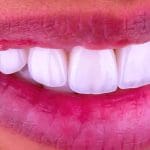Tooth discoloration is a common dental problem that affects millions of people worldwide. It refers to any change in the natural color of teeth, which can range from yellow or brown to gray or even black. Tooth discoloration can have a significant impact on a person’s self-esteem, confidence, and overall quality of life. In this article, we’ll explore the causes, types, and treatments for tooth discoloration.
Causes of Tooth Discoloration
Tooth discoloration can occur due to a variety of factors, including:
- Genetics
- Aging
- Poor oral hygiene
- Foods and drinks
- Smoking
- Medications
- Diseases
- Dental materials
- Environmental Factors
- Trauma
Genetics
Some people may be genetically predisposed to tooth discoloration, which means that their teeth naturally appear yellowish or gray.
Aging
As we age, the enamel on our teeth wears away, exposing the dentin underneath. Dentin is naturally yellowish in color, which can make our teeth appear darker.
Poor oral hygiene
If you don’t brush and floss your teeth regularly, plaque and tartar can build up, leading to stains and discoloration.
Foods and drinks
Certain foods and drinks, such as coffee, tea, red wine, and dark-colored fruits, can stain teeth over time.
Smoking
Tobacco products contain tar and nicotine, which can leave brown or yellow stains on teeth.
Medications
The antibiotics tetracycline and doxycycline can cause tooth discoloration when given to children whose teeth are developing (before age 8). Mouthwashes and detergents containing chlorhexidine and cetylpyridinium chloride can also stain teeth. Antihistamines (such as Benadryl), antipsychotics, and some high blood pressure medications can also cause tooth discoloration.
Diseases
Several diseases that affect tooth enamel (the hard surface of the tooth) and dentin (the substance underneath the enamel) can lead to tooth discoloration. Treatment for certain conditions can also affect tooth color. For example, head and neck radiation therapy and chemotherapy can change the color of teeth. In addition, some infections in pregnant mothers can lead to tooth color change in their babies by affecting the growth of tooth enamel.
Dental materials
Some materials used in dentistry, such as amalgam restorations, especially those containing silver sulfide, can cause a grayish-black color to the teeth.
Environmental Factors
Too much fluoride from environmental sources (naturally high levels of fluoride in water) or overuse (fluoride applications, rinses, toothpastes, and oral fluoride supplements) can cause tooth discoloration.
Trauma
For example, trauma from falling can disrupt enamel formation in young children whose teeth are still developing. Trauma can also cause discoloration of adult teeth.
Types of Tooth Discoloration
There are two main types of tooth discoloration:
- Extrinsic discoloration
- Intrinsic discoloration
Extrinsic discoloration
This type of discoloration affects the outer layer of the tooth, the enamel. It is usually caused by external factors such as food, drinks, smoking, and poor oral hygiene.
Intrinsic discoloration
This type of discoloration affects the inner layer of the tooth, the dentin. It is usually caused by internal factors such as genetics, aging, and certain medications.
Types of tooth discoloration based on color
There are various types of tooth discoloration based on color, which can help indicate the cause:
- Yellow: As the white surface of tooth enamel wears away with age, the yellow core of the tooth becomes more visible.
- Brown: Tooth discoloration may be caused by tobacco use, dark drinks like coffee or tea, and poor brushing habits that lead to tooth decay.
- White: Too much fluoride during the development of young teeth can cause white spots, a condition called fluorosis. This can occur from drinking fluoridated water or using excessive amounts of fluoride rinse or toothpaste.
- Black: Tooth decay or pulp necrosis can turn teeth gray or black, and chewing betel nut can also cause darkening. Exposure to minerals such as iron, manganese, or silver in industrial settings or from supplements may result in a black streak on teeth.
- Purple: Red wine can stain tooth enamel the same color as the drink.
Tooth Discoloration and Caries: two different dental issues
Tooth discoloration refers to any change in tooth color, which can be caused by various factors such as aging, consumption of certain foods and drinks, tobacco use, poor dental hygiene, and some medical conditions. However, tooth decay caused by bacteria can often lead to discoloration of teeth, and the darkening of a tooth can be a sign of decay.
To diagnose tooth decay, it is essential to visit a dentist who can use their knowledge and experience, along with dental radiography or other diagnostic tools, to make a definitive diagnosis.
In most cases, tooth discoloration caused by caries can be removed by filling the tooth. If the decay has reached the tooth nerve, a root canal treatment may be necessary, and dental veneers can restore the appearance of the tooth. However, the treatment plan will depend on the severity and extent of the decay, and a dentist will be able to provide the best course of action.
Discoloration of the filled tooth
Discoloration of a filled tooth can occur due to various reasons:
- Leakage and decay
- Amalgam filling
- Wear and tear of composite filling
Leakage and decay
Sometimes, decay can occur around the edges of the filling, causing discoloration. In such cases, the old filling material needs to be removed, and the decayed area should be cleaned and filled with new material.
Amalgam filling
The use of amalgam filling material can lead to discoloration over time due to the penetration of mercury into the tooth. In such cases, the solution is to replace the amalgam filling with a composite filling.
Wear and tear of composite filling
Composite fillings can change color over time due to wear and tear or exposure to staining agents such as coffee or tobacco. This can be a sign of the need to replace the filling with a new composite material.
It is important to consult a dentist if you notice any discoloration in your filled tooth, as it may indicate underlying dental problems that need to be addressed.
Prevention of Tooth Discoloration
To prevent tooth discoloration, there are a few things you can do:
- Watch out for foods and drinks that can stain your teeth, such as coffee, tea, red wine, and blueberries. Rinse your mouth or brush your teeth after consuming them.
- Consider cutting down or quitting smoking and excessive coffee consumption.
- Use a straw when drinking colored liquids to minimize their contact with your teeth.
- Maintain good oral hygiene by brushing, flossing, and using antibacterial mouthwash daily to fight plaque and tartar buildup.
- Visit your dentist for regular scaling and cleaning every six months to keep your mouth healthy and your smile bright.
- If you notice any unexplained changes in your tooth color, make an appointment with your dentist for an evaluation.
Treatment for Tooth Discoloration
The treatment for tooth discoloration depends on the cause and type of discoloration. Here are some common treatments:
- Professional teeth whitening
- Dental bonding
- Porcelain veneers
- Dental crowns
- In-office microabrasion
- Lifestyle changes
Professional teeth whitening
This is the most common treatment for extrinsic discoloration. Your dentist will use a bleaching agent to remove stains and lighten the color of your teeth.
Dental bonding
This is a cosmetic procedure in which a tooth-colored resin is applied to the surface of the tooth to improve its appearance.
Porcelain veneers
This is a cosmetic procedure in which a thin shell of porcelain is placed over the front of the tooth to improve its appearance.
Dental crowns
This is a restorative procedure in which a tooth-shaped cap is placed over a damaged or discolored tooth to restore its function and appearance.
In-office microabrasion
This is a procedure in which a dental professional uses a fine abrasive to remove surface stains from the teeth.
Lifestyle changes
Making changes to your diet, quitting smoking, and improving your oral hygiene habits can help prevent future tooth discoloration.
Conclusion
Tooth discoloration is a common dental problem that can be caused by a variety of factors. It can affect a person’s self-esteem and confidence, but there are several treatments available to improve the appearance of discolored teeth. If you are experiencing tooth discoloration, it’s important to talk to your dentist to determine the cause and appropriate treatment. Additionally, maintaining good oral hygiene habits and making lifestyle changes can help prevent future tooth discoloration.





